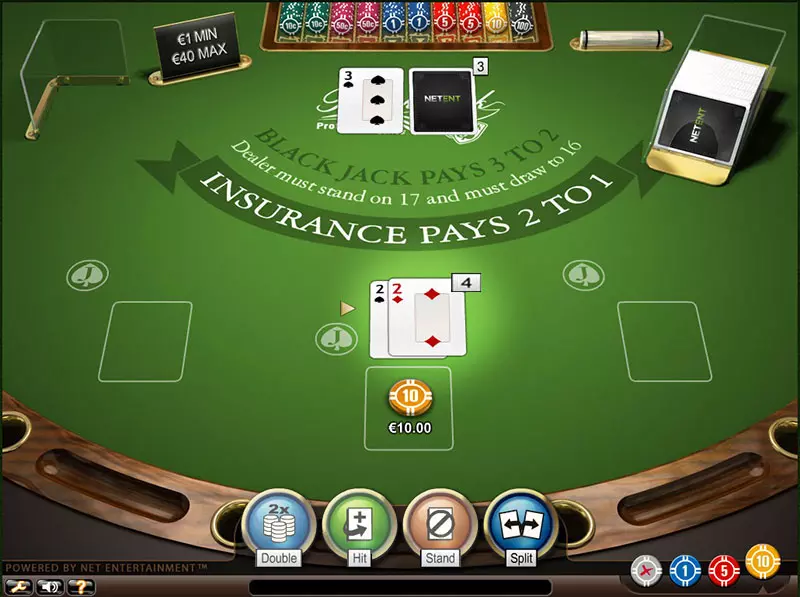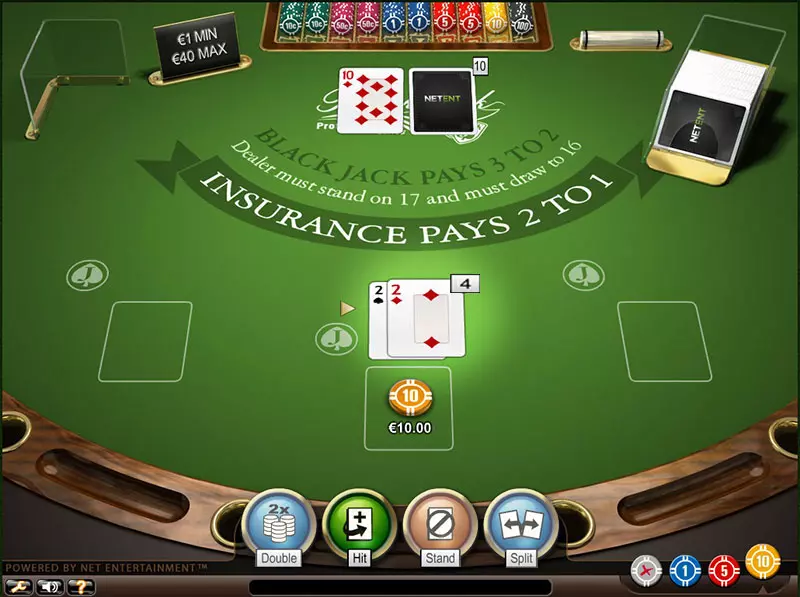Every card game offers countless combinations, especially when more than one deck is used. Blackjack can be played with multiple decks, which makes the game more challenging and interesting. Players who want to learn how to beat it and gain an advantage over the casino need to acquire the necessary knowledge and skills.
It is imperative to follow a reliable strategy and adhere to it throughout the game, as this is the only way to gain an advantage from time to time. It is also crucial to have a solid understanding of all the possible hands in order to make the best move in every situation.
One of the choices players must make is when to decide to split. Most casinos allow the splitting of two cards of the same rank, for instance, two aces, two 2s, and so on. However, players must check the rules before playing, as some venues have specific restrictions on this move and on the number of times they can split.
A few crucial questions arise – which pairs to split, when, and why. In this chapter, we examine two specific pairs – a pair of 2s and 3s.
Reasons for Splitting
First of all, let us remind ourselves why players split pairs in the first place. The motive behind this move is the same as the one for doubling down – players need to win as much money as possible whenever the dealer is in a weak position. This is crucial, as splitting is only beneficial when applied correctly.
Splitting pairs against weak face-up cards, like 4, 5, and 6, is considered an offensive play since it gives players the opportunity to capitalise on the dealer’s disadvantage. This dents the casino’s edge and leads to higher average earnings for the player.
With that said, splitting is sometimes used as a defensive move, as is the case with paired 7s against the dealer’s deuce in shoe-dealt S17 games without doubling after a split. Hard 14 is generally a poor total for the player and produces a negative expectation against this upcard when one stands. Meanwhile, hitting this total yields even greater long-term losses for the player, as the odds of busting are higher with a hard 14.
Splitting the pair of 7s is the best way to go since it allows you to start two new relatively strong hands, each with a 7, and cut your inevitable losses. Sadly, the concept of increasing one’s wager to reduce losses is counter-intuitive and confusing to many novice players, who end up frequently misplaying such tricky pairs.
Finally, the third major reason to split is that you can transform a poor starting total into a winning one. The most prominent example is splitting paired 8s against the dealer’s deuce through 7 in multiple-deck games. Out of all possible playing decisions, splitting the 8s is the only move that improves your odds and gives you positive expected value.
Players must follow their chosen strategy and understand why a particular move is the correct one. Otherwise, they are bound to lose over and over again. They need to bear in mind that blackjack is a card game, and as such, it is logically driven. Thus, gamblers can predict the outcome of their moves to some extent and make better choices. Splitting can be really beneficial if players know how to take advantage of it.
| 2s and 3s Basic Strategy Chart for Double-Deck and Multiple-Deck Games with DAS | ||||||||||
|---|---|---|---|---|---|---|---|---|---|---|
| Player’s Hand | Dealer’s Upcard | |||||||||
| 2 | 3 | 4 | 5 | 6 | 7 | 8 | 9 | 10 | Ace | |
| 2-2 | Ph | Ph | P | P | P | P | H | H | H | H |
| 3-3 | Ph | Ph | P | P | P | P | H | H | H | H |
When To Split Pairs of 2s and 3s
Whenever players are dealt two cards of the same rank as their first two cards, such as a pair of 2s or 3s, most casinos allow the move to split. The same strategy applies to both pairs, and players should follow it consistently. It takes into account their hand value as well as the dealer’s upcard.
The choice of play here is based on how many decks the game is dealt from, as well as on whether the house allows you to double down after you split. In double-deck and shoe-dealt blackjack variations that support doubling after splitting (DAS), paired 2s and 3s should be split when the dealer’s upcard is 2 through 7 – in other words, whenever the dealer is in a weak position.
Splitting a Pair of 2’s or 3’s
Splitting a Pair of 4’s
Splitting a Pair of 5’s
Splitting a Pair of 6’s
Splitting a Pair of 7’s
This way they will be able to bet extra money when the dealer is in a disadvantageous position, which should be every player’s goal. The dealer has a higher chance of ending up with a busting hard hand when their first card is 2 through 7. Splitting the 2s and 3s, however, serves multiple purposes for the player.
It provides you with the opportunity to catch a good card that could potentially allow you to make a successful double down following the split. Then again, a starting total of hard 4 (2-2) or hard 6 (3-3) is not particularly strong for the player. By splitting these pairs, you get to transform a losing total into a winning one.
As for the remaining dealer upcards, the 2s and 3s should be hit versus 8 through ace in multiple-deck blackjack with DAS. These cards put the dealer in a stronger position. They are less likely to bust and have better chances of reaching their standing total of 17 or higher.

Outcomes of Splitting Pairs of 2s
Let us examine one possible outcome when splitting pairs of 2s, and why this move can be a good option. As already mentioned, players usually split only when the dealer’s upcard is 2 through 7.
To illustrate this, consider the following situation. If players have a pair of 2s in their hand and the dealer’s upcard is 4, the chances that they will draw a card enabling them to double down are very high.
If they are dealt an 8, their hand will total 10, and they will be able to double down. The same applies if they receive a 9, 7, 6, or an ace. The above-mentioned case shows that splitting 2s gives multi-deck DAS players the opportunity to double down and take advantage of the dealer’s weak position.
There are five cards in a deck that lead to this option and whenever players get lucky enough to receive them, they need to know how to make the most of the situation. As the chart below demonstrates, hitting your paired 2s produces negative expected value for the basic-strategy player. Splitting your deuces versus the dealer’s 4 helps you overcome your disadvantage and generates positive expected value for you.
| EV of Basic Strategy Moves for 2s and 3s against 4 and 2 in Multi-Deck DAS Games | |||
|---|---|---|---|
| EV of 2-2 vs. 4 | EV of 3-3 vs. 2 | ||
| Hitting | -0.049367 | Hitting | -0.140759 |
| Splitting | +0.059088 | Splitting | -0.13771 |
Some shoe-game players abstain from splitting their 2s when the dealer exposes a deuce or 3. They prefer to hit instead, arguing that the dealer’s bust rates are lower when they start with 2 or 3. Unfortunately, this wariness eventually costs them money.
Such players forget that doubling after a split is a rule that works to the advantage of casino patrons, enabling them to increase their wager should they catch a good hit card on their split deuces. That is why correct basic strategy advises splitting your 2s and 3s against 2 or 3 as well as against the other small upcards (4, 5, 6, and 7).
But what about games that disallow doubling after a pair split (NDAS)? Under such circumstances, both splitting and hitting produce negative expected value over the long haul. Nevertheless, the odds lean slightly in favour of hitting, helping you incur lower losses from this pair on average.
| 2s and 3s Basic Strategy for Double-Deck and Multiple-Deck NDAS Games | ||||||||||
|---|---|---|---|---|---|---|---|---|---|---|
| Player’s Hand | Dealer’s Upcard | |||||||||
| 2 | 3 | 4 | 5 | 6 | 7 | 8 | 9 | 10 | Ace | |
| 2-2 | H | H | S | S | S | S | H | H | H | H |
| 3-3 | H | H | S | S | S | S | H | H | H | H |
Playing 2s and 3s in Single-Deck Blackjack
There are differences in the recommended strategy plays against some upcards when one plays blackjack variations dealt from a single pack. Whether the dealer draws to soft 17 is not what matters here. What matters is whether or not players have the option to double after a pair split.
In single-deck games where DAS is in place, you should split your deuces against the dealer’s 2 through 7 and hit against all other upcards. A pair of 3-3 should be split only when the dealer’s starting card has a value of 2 through 8.
| 2s and 3s Basic Strategy in Single-Deck DAS Games | ||||||||||
|---|---|---|---|---|---|---|---|---|---|---|
| Player’s Hand | Dealer’s Upcard | |||||||||
| 2 | 3 | 4 | 5 | 6 | 7 | 8 | 9 | 10 | Ace | |
| 2-2 | Ph | P | P | P | P | P | H | H | H | H |
| 3-3 | Ph | Ph | P | P | P | P | Ph | H | H | H |
The strategy is a little different in cases where NDAS applies. When this is the case, single-deck players are advised to split only when the dealer has disadvantageous cards 3 through 7, and hit against the dealer’s deuce, 8, 9, 10, and ace. The pair of 3s should be split versus the dealer’s 4 through 7. Hitting is optimal with 3s when the dealer starts their hand with 2, 3, 8, 9, 10, or ace. This is because hitting slightly outperforms the split where expected value is concerned.
| 2s and 3s Basic Strategy in Single-Deck NDAS Games | ||||||||||
|---|---|---|---|---|---|---|---|---|---|---|
| Player’s Hand | Dealer’s Upcard | |||||||||
| 2 | 3 | 4 | 5 | 6 | 7 | 8 | 9 | 10 | Ace | |
| 2-2 | H | P | P | P | P | P | H | H | H | H |
| 3-3 | H | H | P | P | P | P | H | H | H | H |
When to Avoid Splitting Pairs of 2s and 3s
If players find themselves in a situation where their first two cards turn out to be a pair of 2s or 3s, there are a few things to take into account. As already mentioned above, these pairs should only be split if the dealer’s upcard is weak. This raises the question of what the best move is when the situation is different.
If the dealer’s upcard is 8 through ace, they should hit (in multi-deck DAS games), contrary to the popular claim that they should always split regardless of the dealer’s upcard. Players need to understand that whenever the dealer has a power card, he or she is not in a weak position, and splitting would only make matters worse for them.
Doubling your wager by splitting is a poor decision versus high upcards for two main reasons. First, the dealer is less likely to bust. On the contrary, this improves their odds of arriving at decent totals like 19 or 20 and winning the round. An example is a dealer with an exposed 9 in a six-deck S17 variation whose likelihood of reaching 19 stands at 35.18%, whereas their bust rate decreases to 22.92%.
In comparison, a dealer who starts with a 5 stands a 41.84% probability of breaking their hand, whereas their likelihood of forming a total of 19 is considerably reduced to 11.76%. Similar tendencies can be observed when the dealer’s starting cards are aces or ten-value ones. It makes zero sense to up your wager by splitting under such unfavourable circumstances.

Things Worth Remembering When Splitting
It is of great importance for players to be aware of all the opportunities splitting gives them and why this move is their best choice in a particular situation, such as when the dealer’s upcard is 4. They need to remember that the main reason behind splitting 2s and 3s against the dealer’s weak card is that it gives them the chance to take advantage of the situation by increasing their wager.
Another useful tip to bear in mind is that when players are done splitting and receive the additional cards for both hands, they should deal with the first hand and proceed to the second only after the first hand is completed. Otherwise, the game may slow down, not to mention that switching from one hand to the other can be very confusing.
It is also worthwhile mentioning a few words on resplitting your 2s or 3s, for example, when you happen to catch another deuce or a 3 on one or both split hands. When this happens against small upcards, say a 4, you should resplit again to make a third hand. Assuming you receive yet another pair, you should resplit once more, provided that the house rules allow for splitting up to three times (i.e. to a maximum of four hands).
Resplitting multiple times is a player-favourable option one should always make use of. Due to this, players must acquaint themselves with the exact house rules on pair splitting before they buy in at any given blackjack table.
Conclusion
If players want to master blackjack and win in the long run, they need to be aware of all the subtleties and difficult choices they must make throughout the game. Knowing the possible outcomes in a particular situation is crucial, as it allows them to make the move that leads to the least possible financial loss.
Moreover, players need to follow a strategy and prepare in advance, since during play they will not have time to think the situation through and are bound to lose the hand. It is essential to know when to split 2s and 3s, as they give players the chance to double down afterwards and increase their bet, provided that the dealer’s position is weak. Such chances are rare and players should take full advantage of them.



